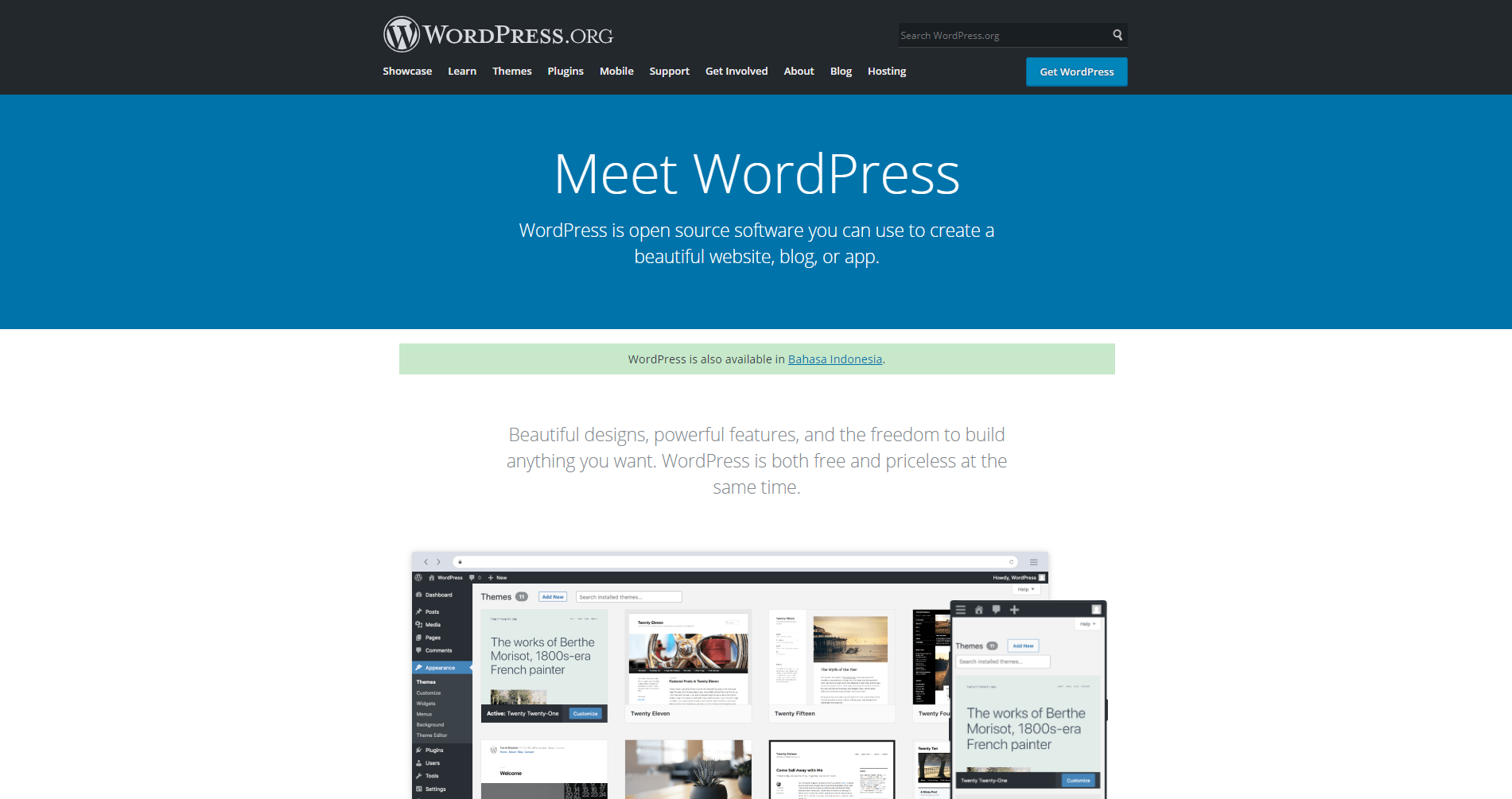With the popularity of websites ever increasing, it’s not hard to understand why people are figuring out how to make as much as they can through their websites. It’s relatively cheaper, and the profits could amount to the same.
The challenge for many though revolves around the specifics; just how am I going to start making money off of my website?
Fortunately, there are a few tried-and-true practices that could get you started. Read on and see which methods, or which combinations, might fit your style.
Ten ways to monetize a website
We’ve summarized ten methods or strategies that you might be able to make use of for your website. They’ll be approaching the problem from different perspectives, as this should allow you to get a better feel for the environment you’ll be heading into.
1. Affiliate marketing
Let’s start with the most common practice we see these days. Affiliate marketing is pretty simple; a website promotes a product owned by a brand, and any purchases made through the website earn them a small commission.
It’s relatively easy given that you know how to create content. That’s because people might not take kindly to overselling or any other blatant promotion.
This is why we see so many product review channels on YouTube. These channels review products and offer affiliate links to the product pages. These affiliate links tell the store that the buyer found the product through the channel.
The trick then is partnering with someone who knows how to make a good product. Figure that part out, and all you’ll have to do is talk about the thing.
2. Pay-Per-Click advertising
Now, let’s talk about something a little more old-school in its approach. Advertising on the internet usually operates on a Pay-Per-Click (PPC) model, meaning that ad spaces are paid on by each click the ad gets.
This might explain why we get permissions from apps and websites for gathering our information.
The information that these things gather revolves around our search habits, helping them learn more about the products site visitors are interested in.
Of course, the popularity of your site will come into play as well as the brand or business selling the product. For the average site, prices usually hover around $.50. Ads on more popular websites can reach up to $5.00.
3. Start a YouTube channel
Yes, technically, this isn’t your website exactly. What it is, though, is a perfect pairing for a website that you do own. Aligning the content on both your site and your channel will allow you to create a more relevant avenue for site visitors.
Let’s face it, video consumption has been on the rise for a while now, and last year just solidified that case. With the availability of YouTube, Hulu, and a host of other online video platforms, consumers are paying much more attention to their digital devices.
The great thing about this method is that you will not be restricted to a singular revenue stream. YouTube channels can still operate with an affiliate marketing strategy in place. That’s not even including sponsorship opportunities and paid endorsements.
Again, the limiting factor here will be your creativity. Unless you’re planning on delegating this task to a third-party, you’d better start reviewing your marketing techniques.
4. Paid site membership
This one might look a little restrictive, but you’d be surprised at how much people are willing to pay for a good product. With a paid membership system, the product you’d be selling would be quality content.
It doesn’t even have to replace your current website. A paid website is perfect for those looking for something a little more premium.
A popular strategy is limiting the information on the public website to the basics. You could then host behind-the-scenes type of things on the paid membership website while providing them much more information.
You’d better have unique ideas. Unless the premium content is worth the fee you’re charging, it might get a little tricky boosting sales.
5. Monetize email-list access
Following the same idea, a paid email-subscription is a little more old-school. Think of newspaper subscriptions, but for your email. The margins may be smaller, but the smaller expense might convince more people.
You’ll have to judge whether your website is fit for this kind of model. Some examples of websites that might benefit from this model are real estate websites or an online job directory.
Others in the past have used this model to create a private club. Through the paid subscriptions, customers had access to full product listings and special promos.
It’s really up to you and how flexible your mind can be. As long as you’ve got a source of quality information, paid subscriptions are worth considering.
6. Sell your site
Yup, you read that right. Think of it like flipping a house. You develop the groundwork and check all the boxes for the basic necessities. Once it’s ready to go, sell it for a profit.
It might sound a little counterintuitive, but the practice is actually a profitable one. You can easily find online classified ads advertising old websites ready for a transition. After selling the site, the money is then refinanced into building a new website.
Of course, like any business, you’ll have to understand the cost of building a website. Overspending on the product would mean lower margins, but underspending might make it hard to sell the website in the first place.
Figure out what website buyers want, and you can then strategize the kind of website you’ll need to develop. It takes time, yes, but the profit from your first transaction might convince you.
7. Sell a digital product
Instead of advertising someone else’s product, why not advertise your own?
Selling a digital product is much easier compared to physical since you don’t have to find a manufacturer, pay for the product, then sell it for a profit. Instead, product distribution will be much easier since digital files are easily duplicated.
The challenge with this one is creating a product that is worth selling. That entails a lot of research, strategizing, development, and testing to get where you need to be.
It’s time-consuming, yes, but the expenses involved are much lower as compared to selling physical materials. Plus, once you’ve developed the product all you’ll have to do is wait.
Some examples of these are e-books sold by popular bloggers or private courses developed by training websites.
8. Accept donations
The popularity of your brand will be a big factor in this method. Accepting donations is a worthwhile effort as you will only have to set up the payment option for the site visitors. The rest will all be about waiting.
The considerations here are simple. If people find you approachable, likable, or if you’re just generally popular, asking for donations should be a cinch for you.
Otherwise, it might take some convincing to get those donations. Providing site visitors with a welcome pack or something of the like might convince them that what your website is providing is worthwhile.
On average, you can expect donations to reach as high as $1,000. That being said, if your monthly expenses are high, you’ll have to combine this with another strategy.
9. Sell sponsored guest posts
Think of those YouTube endorsements but through writing. Sponsored guest posts are just that, a sponsored blog post talking about a product. The goal here is to increase product reach and develop branding, of course.
With that said the challenge with this one is being able to write good blog posts that can both be honest about the products while also giving people enough reason to purchase the product.
Another consideration is finding a space for these blog posts. Saturating your site with multiple articles on the same product might saturate your readers, after all.
One important note is that sponsored articles should be declared. Readers will appreciate this as this will alert them that the article is sponsored by a specific business or brand.
Of course, the quality of the product will be a factor as well. Spend some time doing some research on any potential partners before signing any deals.
10. Leads generation for other companies
Lastly, we have leads generation. Leads generation is a passive form of revenue generation, as seen on Page Kit’s list of passive income streams. The thing with leads generation is that your part involves creating interest in a product.
Leads are basically any inquiries about a company’s business product or service. You can expect these to be a result of a campaign strategized to create leads.
Your job is to be the strategist, then. Get creative. Often, the best ideas are the simplest. As long as you develop it right, you can expect to satisfy any quota set on you. The tricky part here is finding a business partner that you can work with.
The key here is to focus on a niche. Niche companies are often looking for ways to increase leads as the inherent nature of niche marketing restricts their audience a little bit.
Do you know other ways to monetize a website? Let us know in the comments below!



















